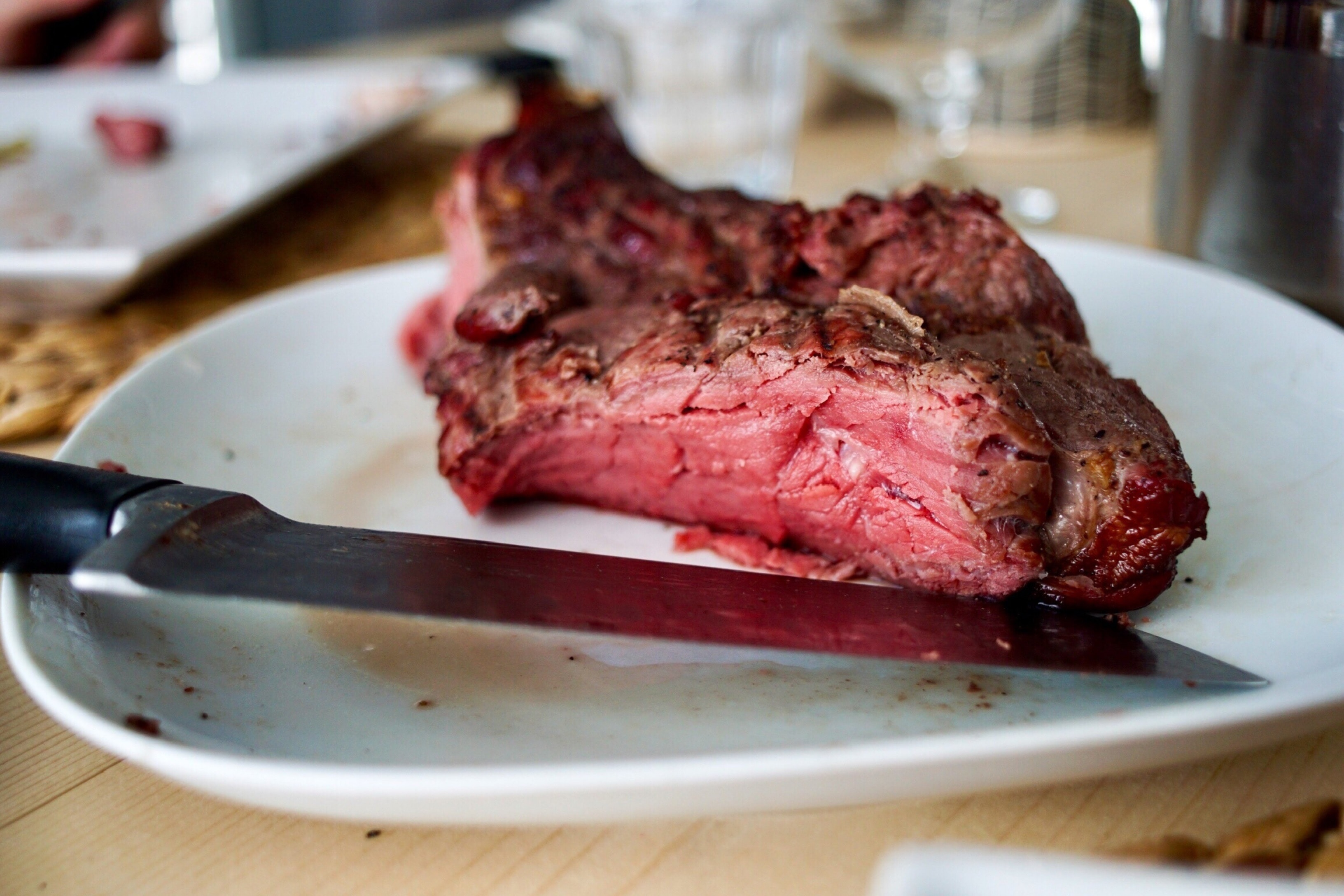My clients are asking me how much red meat is safe to eat. It’s a reasonable question given the conflicting study data we’ve seen recently. So how often can you eat red meat from a health standpoint?
How much red meat is safe to eat?
Has new research left you concerned about the health implications of eating red and processed meat? Read on to find out what the latest findings mean and whether you need to banish the bacon for good.
The latest research from the World Health Organization (WHO) states that processed meats can increase your risk of cancer and red meat probably poses a risk too. So, is meat yet another food to avoid? The short answer to this is no, it doesn’t have to be, it’s all about quality and quantity.
The health benefits of meat
Meat is an excellent source of protein and provides important vitamins and minerals, which our body needs to grow and work. Red meat, such as lamb, beef, pork and venison, is a rich source of iron and is important in preventing the condition anemia. Eating red meat once or twice a week can fit into a healthy diet, especially for toddlers and women of reproductive age. Lean meats, such as chicken and turkey, are lean options and can play a role in maintaining a healthy weight. In addition, the high protein content may help control appetite and keep you ‘fuller for longer’.
What is processed meat?
However, processed meat is a different story. This refers to any meat that is preserved by smoking, curing, salting or adding preservatives. Bacon, sausages, salami, ham and pâtés are all examples of processed meats. These foods are often high in both saturated fat and salt and provide very little in the way of vitamins and minerals.
How much red meat is safe to eat?
Recent research found that people eating around 76g of red and processed meat a day had an increased risk of developing bowel cancer compared to those who ate about 21g a day.
The NHS recommends that those who regularly eat more than 90g of red or processed meat each day should reduce this in light of the possible associations with colon cancer risk. It’s also best to reduce your intake of processed meats where possible.
To put these portion sizes into context:
• Two thin slices of roast beef = 60g
• One pork sausage = 50g
• One portion Bolognese sauce = 60g
• One lamb chop = 70g
• One slice ham = 25g
• 5oz minute steak = 80g
If you’re eating more than this, cutting down isn’t as hard as you may think. Making small swaps to your diet can help without making radical changes.
• Aim to have red meat just once or twice a week.
• Swap processed meats for lentils, chickpeas, kidney beans, peas, butter beans, baked beans or haricot beans.
• These are less expensive, high in fiber and lower in fat.
• Swap lamb or beef mince for turkey or vegetarian mince in spaghetti Bolognese, lasagna and chili con carne. Introduce more white fish such as cod, coley and haddock.
• Aim to have oily fish such as mackerel, herring, sardines and salmon once a week. These are great sources of healthy omega-3 oils.
If you eat a bacon sandwich once a month, then there’s no need to worry. A healthy, balanced diet can include protein from meat, as well as from non-animal sources such as beans and pulses. Moderation is the key.
10 ways to cut down on meat
1. Build meals around vegetables and add a little meat in, rather than the other way around. For example, reduce the amount of meat in stews and curries, and bulk up with extra vegetables, beans, legumes and grains.
2. Use vegetables with a ‘meaty’ quality, such as mushrooms and eggplant.
3. After soaking dried mushrooms (such as porcini and shiitake) in hot water, save the soaking liquid to use in stocks to add a ‘meaty’ flavor.
4. Devise a way of curbing your meat intake that works for you. For example, consider eating meat only on weekends, or restricting meat to one meal per day.
5. Buy meat less frequently but make it the best quality you can afford.
6. Opt for Indian, Middle Eastern or South-East Asian veg dishes that use loads of spices and herbs – you’re less likely to notice the absence of meat.
7. Add cheese! Simple roasted vegetables taste amazing sprinkled with a strong cheese, such as mature cheddar, towards the end of the cooking time.
8. In sandwiches, swap salami, ham or other processed meats with canned tuna, sardines or mackerel, or use roast chicken.
9. If you love bacon, fry one piece until crisp, chop into pieces and add to a salad, omelette or pasta dish.
10. Have one sausage and one bacon piece, instead of two of each, in your full English breakfast – add another egg and extra beans if you’re hungry.
Click here to get more information about how much red meat is safe to eat.






